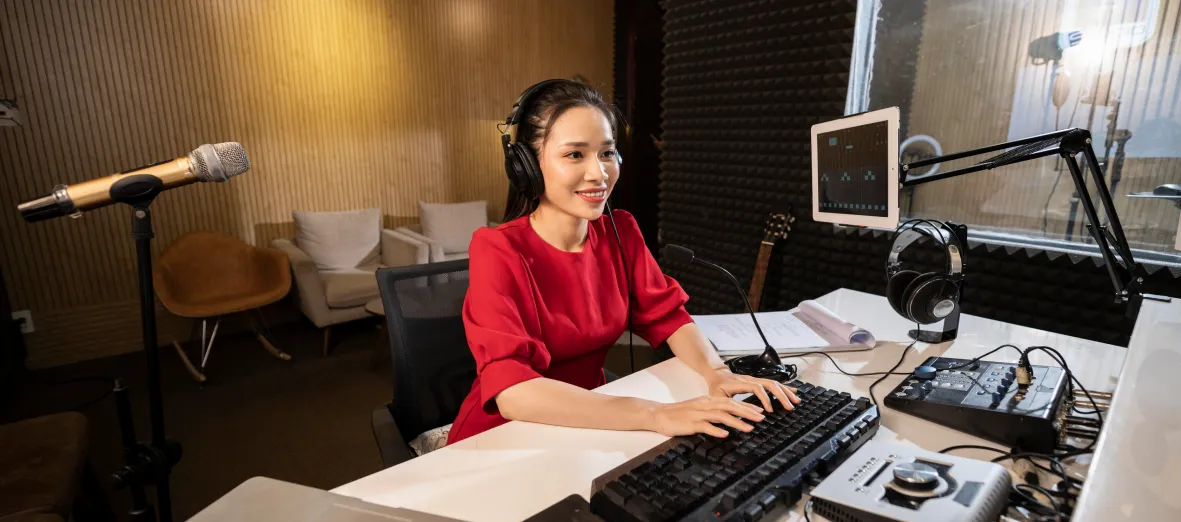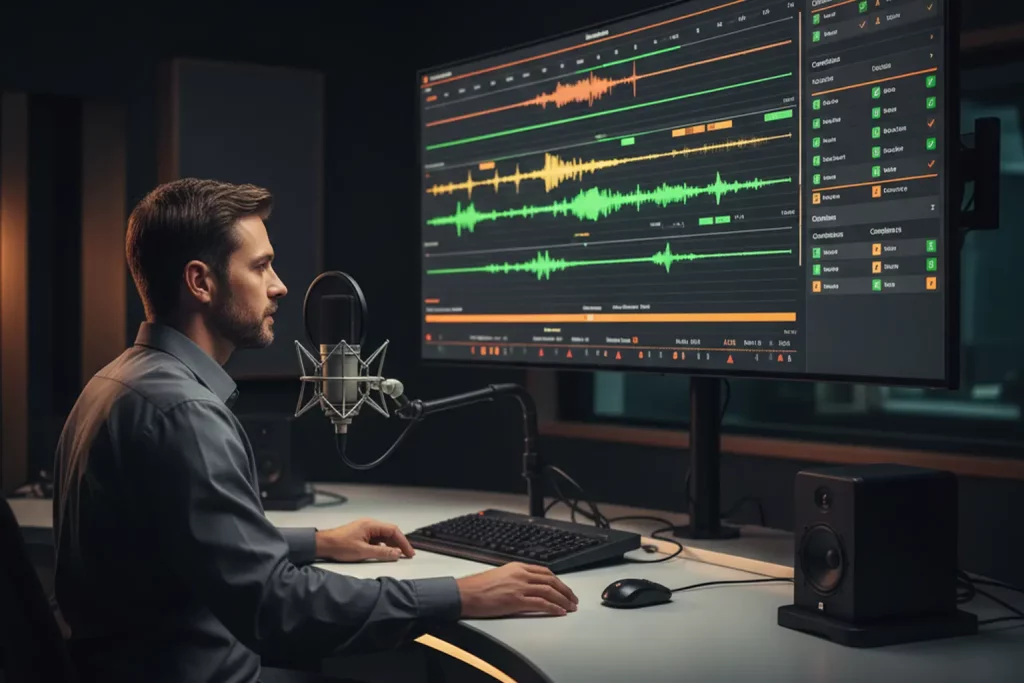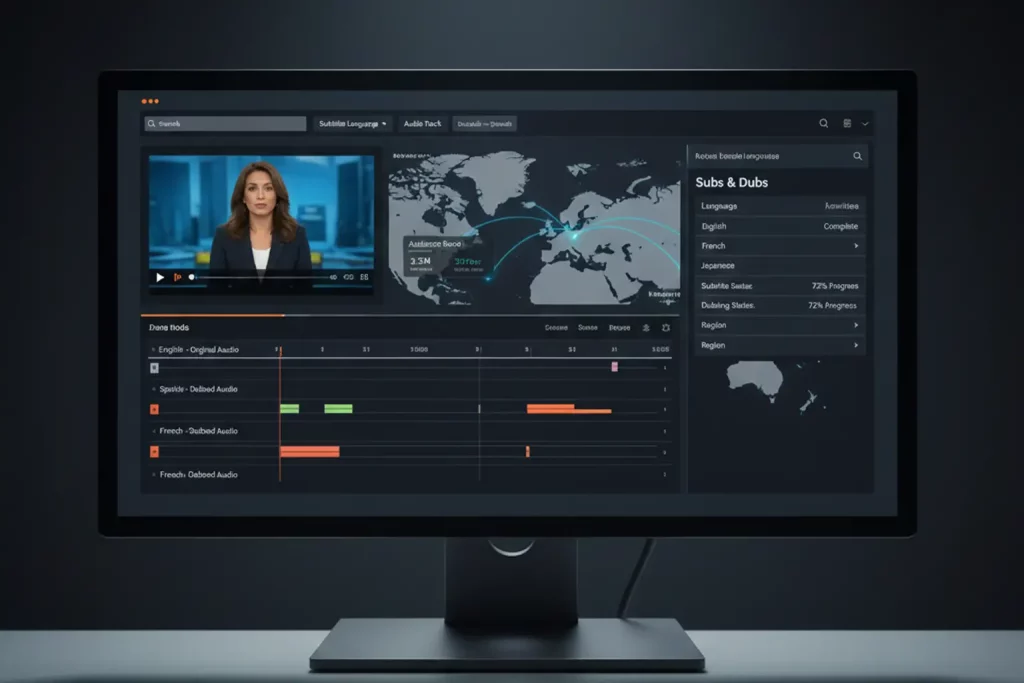In today’s media landscape, accessibility is becoming increasingly crucial. Open captioning, where text is permanently embedded in a video, is vital in making content accessible to a broader audience. Unlike closed captions, which viewers can toggle on or off, open captions are always visible. This aspect ensures that essential information is conveyed to everyone, including individuals with hearing impairments and non-native speakers. As the broadcasting industry strives toward inclusivity, understanding open captioning’s implementation and benefits becomes essential.
How Open Captioning Works
Open captioning involves embedding text directly onto the video stream. This process typically includes transcribing spoken dialogue, relevant sound effects, and other auditory elements. The embedded text is then synchronized with the audio to ensure viewers can follow along seamlessly.
Differences Between Open and Closed Captions
While both open and closed captions serve to make content accessible, there are notable differences:
- Visibility: Open captions are always visible, while closed captions can be toggled on or off.
- Storage: Closed captions are stored as separate text files or within the media file but are not part of the video stream, while open captions are baked into the video.
- Flexibility: Closed captions allow viewers to turn them on or off, whereas open captions do not.
How TranceIQ Helps with Open Captioning
TranceIQ is a comprehensive broadcast monitoring solution that supports broadcasters in managing and monitoring open captioning. Some key features include:
- Captioning Compliance: Ensures that broadcasters adhere to legal requirements for captioning.
- Quality Assurance: Provides tools to monitor and maintain the quality of open captions.
- Real-Time Monitoring: Allows broadcasters to monitor live broadcasts and ensure synchronized and error-free captions.
Ready to experience the future of Captioning? Schedule a free demo today!
Benefits of Open Captioning in Broadcasting
Accessibility and Inclusivity
Open captioning significantly enhances broadcast accessibility. It ensures that individuals with hearing impairments do not miss out on any audio content. Moreover, captions can aid comprehension for non-native speakers by providing a textual representation of spoken dialogue.
Enhanced Viewing Experience
Open captions can also benefit viewers in noisy environments with unclear audio. In restaurants, gyms, or public transportation, they ensure viewers can follow the content without relying on audio alone.
Challenges of Implementing Open Captioning
Technical Obstacles
One of the primary challenges in integrating open captioning is the technical complexity. Ensuring accurate synchronization between audio and text requires precise timing and robust captioning technology. Additionally, embedding captions directly into the video stream can be resource-intensive, often requiring specialized software.
Quality Control
Maintaining high-quality captions is imperative. Errors in transcription, poor synchronization, and inappropriate placement can detract from the viewer’s experience. These issues necessitate rigorous quality assurance processes.
Solutions and Best Practices
To overcome these challenges, broadcasters can adopt several practices:
- Use Advanced Captioning Software: Leveraging sophisticated captioning technology can streamline the process, ensuring accuracy and efficiency.
- Regular Quality Checks: Implementing stringent quality control measures can help identify and rectify errors promptly.
- Professional Captioning Services: Hiring professional captioners can enhance the quality and reliability of open captions.
Legal and Regulatory Requirements
Legal Landscape
Various legal requirements mandate the inclusion of captions in broadcast content. In the United States, for instance, the Federal Communications Commission (FCC) enforces rules to ensure that television programs are accessible to all viewers, including those with disabilities.
International Standards
Different countries have their regulations regarding captioning. For example:
- European Union: The Audiovisual Media Services Directive requires broadcasters to make their services accessible to people with disabilities gradually.
- Australia: The Broadcasting Services Act mandates that free-to-air broadcasters provide captions for specific programming.
Compliance with these regulations is critical for broadcasters aiming to provide inclusive media.
Best Practices for Effective Open Captioning
Clarity and Readability
Clear and readable captions are paramount. Here are some tips:
- Font Style and Size: Use a legible font style and size that is easy to read against various backgrounds.
- Contrast: Ensure sufficient contrast between the text and background to make the captions stand out.
- Avoid Clutter: Keep captions concise and avoid unnecessary information that may overwhelm the viewer.
Timing and Synchronization
Proper synchronization between audio and captions is essential. Captions should appear on screen simultaneously with the corresponding audio to ensure viewers can follow along without confusion.
Placement
Captions should be placed consistently, typically at the bottom of the screen, where they do not obstruct crucial visual content.
Technological Solutions for Open Captioning
Captioning Software and Tools
Several advanced tools and software solutions are available to aid broadcasters in creating and managing open captions. These tools often feature automation capabilities to streamline the captioning process.
Automation vs. Manual Processes
While automation can significantly speed up the captioning process, it may sometimes achieve a different level of accuracy than manual captioning. A hybrid approach combining automated tools with human oversight can often provide the best results.
Successful Open Captioning Implementation
Public Broadcaster
A public broadcaster in Europe implemented open captioning across its programming. The initiative not only enhanced accessibility but also increased viewership among individuals with hearing impairments and non-native speakers.
Sports Network
A renowned sports network incorporated open captions during live broadcasts. This move was particularly beneficial in noisy environments like sports bars, where viewers could follow the game without relying on the audio commentary.
Future Trends in Open Captioning
AI and Machine Learning
Advancements in AI and machine learning are poised to revolutionize captioning technology. By leveraging these technologies, broadcasters can achieve more accurate and efficient captioning.
Increased Adoption
As the importance of accessibility continues to grow, more broadcasters are likely to adopt open captioning to provide inclusive media experiences.
Interactive Captions
Innovations in interactive captions, where viewers can interact with the captions to get more information, are also on the horizon. This technology can enhance the viewing experience by providing additional context and details.
Conclusion
Open captioning is a powerful tool for making broadcasting more accessible and inclusive. While implementing and maintaining high-quality open captions can be challenging, the benefits outweigh the obstacles. By understanding the technical aspects, legal requirements, and best practices, broadcasters can effectively leverage open captioning to reach a wider audience.
Technological advancements and tools like TranceIQ can further support broadcasters in this endeavor, ensuring compliance and quality assurance. As the industry evolves, staying informed about future trends and innovations in captioning technology will be crucial for broadcasters aiming to provide inclusive media experiences.
By embracing open captioning, the broadcasting industry can take significant strides toward inclusivity, ensuring that all viewers, regardless of their hearing abilities or language proficiency, have equal access to media content.
Digital Nirvana: Empowering Knowledge Through Technology
Digital Nirvana stands at the forefront of the digital age, offering cutting-edge knowledge management solutions and business process automation.
Key Highlights of Digital Nirvana –
- Knowledge Management Solutions: Tailored to enhance organizational efficiency and insight discovery.
- Business Process Automation: Streamline operations with our sophisticated automation tools.
- AI-Based Workflows: Leverage the power of AI to optimize content creation and data analysis.
- Machine Learning & NLP: Our algorithms improve workflows and processes through continuous learning.
- Global Reliability: Trusted worldwide for improving scale, ensuring compliance, and reducing costs.
Book a free demo to scale up your content moderation, metadata, and indexing strategy for your media assets with minimal effort and get a firsthand experience of Digital Nirvana’s services.
FAQs:
1. What is the main difference between open and closed captions?
Open captions are constantly visible on the screen, whereas closed captions can be toggled on or off by the viewer.
2. How does open captioning enhance accessibility?
Open captioning provides text for spoken dialogue and sound effects, ensuring that individuals with hearing impairments and non-native speakers can understand the content.
3. What challenges do broadcasters face with open captioning?
Broadcasters face technical challenges such as synchronizing audio with text and maintaining high-quality captions. Quality control and resource-intensive processes are also significant hurdles.
4. What legal requirements exist for open captioning?
The FCC enforces rules for accessible television programming in the U.S. Other regions, such as the EU and Australia, have similar mandates to ensure media accessibility.
5. How can TranceIQ assist with open captioning?
TranceIQ offers tools for captioning compliance, quality assurance, and real-time monitoring, helping broadcasters manage and improve their open captioning efforts.



